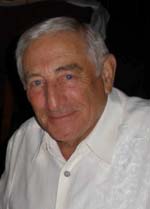Price-Anderson and the oil spill
 This past summer, we watched political near-hysteria toward BP, the giant energy company. Oil from an uncapped well in the Gulf of Mexico was gushing on every newscast. Booms and vessels were at work trying to contain and capture the oil. Birds and animals were shown covered with slimy goo.
This past summer, we watched political near-hysteria toward BP, the giant energy company. Oil from an uncapped well in the Gulf of Mexico was gushing on every newscast. Booms and vessels were at work trying to contain and capture the oil. Birds and animals were shown covered with slimy goo.
Americans were angry at BP, and the company's executive spokesman in the early days and weeks appeared arrogant. Even with cameras on the wellhead, BP was accused of cover up information that neither the company, the Coast Guard, the academics who were heard nightly, or the news media knew.
The President demanded and got a commitment of $20 billion from BP as a fund to cover losses of lives, livelihoods, and property.
For myself and many of my colleagues, the incident brought back memories from 1979 of Three Mile Island. Executives of the plant at the time were pressured to talk before they had a chance to know all the details. Several regulators went off half-cocked about a disaster waiting to happen, and the media listened to every activist that could be found. The Pennsylvania governor ordered an evacuation of pregnant women and small children, even as his top nuclear technical person was trying to tell him that there was no reason to do so.
The necessary element in the Price-Anderson Act (PA) was that it placed a limit on liability that a single company would face in the event of a nuclear incident. This was essential because Ralph Nader had tipped his hand. Nader threatened to challenge the validity of every nuclear utility bond because the companies faced an "unlimited liability." No probabilistic argument could counter that ploy, and Nader knew it.
PA covered damages from Three Mile Island. When all were paid, the amount was small.
Committed congressional representatives quickly went to work. It took seven years before Congressman Morris "Mo" Udall (D., Ari.) and his dedicated staff made changes in 1987. The monetary liability changed. It had been $540 million for the licensee and then an industry insurance pool, which added a layer of a couple of hundred millions, and then the federal government would assume the rest of the damage claims.
After 1987, every licensee was liable for $100 million - up to $16 billion for a national liability pool.
The nuclear industry is proud of its excellent record. No large claims have ever been made for a commercial nuclear accident.
Price-Anderson has survived intact since 1987. Will it survive the Gulf oil spill?
The law that covers off-shore oil operations seems similar to Price-Anderson. It limits the liability for a single accident to $75 million for the company of record.
There is heavy pressure on Washington about amending the oil law. That would be ex post facto for the BP disaster, so that angle may not be constitutional. But the political sentiment is rising, driven by extensive media coverage.
The Wall Street Journal already carried two op-eds by academic economists with the messages: "Why BP should be held fully liable for all economic damages" and "The best way to deter future spills is to expose drillers to the full costs of any mistake and not let any company without proper insurance near an oil derrick."
U.S. oil consumption has not decreased due to the oil spill. Economists will soon have to think about an energy-poor nation with a major thirst for gasoline, oil products, and natural gas. The oil not pumped from the Gulf will be purchased from other nations.
* * * *
If anyone thinks that claims following a nuclear power plant incident would be limited, that would be dreaming. Even if the leak of radiation turned out to be limited, Mr. Nader and his followers would arise fighting.
The linear non-threshold theory of radiation health effects would generate the headlines. That's the angle that Congress would be pressured to use to set the ultimate numbers of cancer victims.
It would be on every network, with even more amateurish reporting than we saw surrounding the Gulf.
At the June ANS meeting in San Diego, NRC Chairman Jazcko told the opening plenary session that the NRC will initiate a new study to update the 1990 work on cancers near a few selected nuclear plant sites. That study showed no relationship between plant locations and cancers and has stood the test of time. It has continually been attacked by anti-nuclear critics because it did not demonstrate what they thought it should.
The National Research Council of the National Academy of Sciences will manage the new study. The first phase had been announced. This phase will be a study to choose a methodology and to evaluate whether it will be feasible to find meaningful answers.
The NRC says that there is a lot more data now.
The first shoe has already dropped. A newspaper in South Carolina reported on September 13 that the region around the Oconee nuclear plant will be studied. Some residents were quoted as saying, "It's about time."
Stay tuned for falling shoes!

A. David Rossin
A. David Rossin is an independent consultant on nuclear power safety, materials, energy policy and nonproliferation. He is an educator and speaker and is currently teaching an "Energy Politics" course at the Sarasota campus of the University of Florida. Among his many distinguished accomplishments, Rossin was previously Assistant Director of the Argonne Reactor Engineering Division (1967-69) and Director of Research for Commonwealth Edison Co. (1972-81). He served as Director of the Nuclear Safety Analysis Center at EPRI from 1981-86.
Rossin served Assistant Secretary for Nuclear Energy (U.S. Department of Energy, 1986-87). He is a former President of the American Nuclear Society (1992-93).

